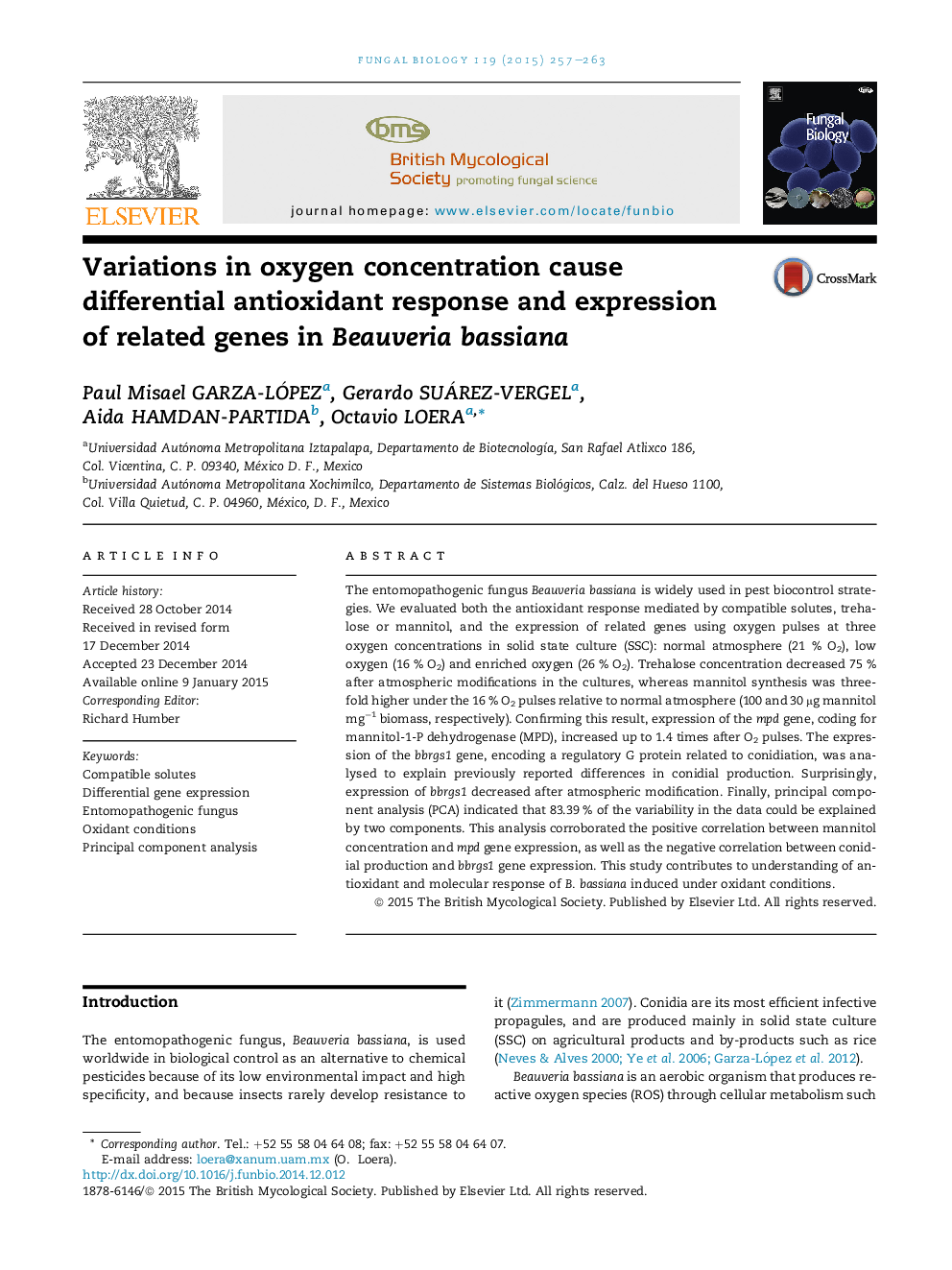| Article ID | Journal | Published Year | Pages | File Type |
|---|---|---|---|---|
| 4356820 | Fungal Biology | 2015 | 7 Pages |
•Trehalose concentration decreased due to oxygen pulses.•Atmospheric exchange caused an increase in mannitol synthesis.•Mannitol synthesis an mpd gene expression was related.•Oxidative states caused different antioxidant and genetic responses.
The entomopathogenic fungus Beauveria bassiana is widely used in pest biocontrol strategies. We evaluated both the antioxidant response mediated by compatible solutes, trehalose or mannitol, and the expression of related genes using oxygen pulses at three oxygen concentrations in solid state culture (SSC): normal atmosphere (21 % O2), low oxygen (16 % O2) and enriched oxygen (26 % O2). Trehalose concentration decreased 75 % after atmospheric modifications in the cultures, whereas mannitol synthesis was three-fold higher under the 16 % O2 pulses relative to normal atmosphere (100 and 30 μg mannitol mg−1 biomass, respectively). Confirming this result, expression of the mpd gene, coding for mannitol-1-P dehydrogenase (MPD), increased up to 1.4 times after O2 pulses. The expression of the bbrgs1 gene, encoding a regulatory G protein related to conidiation, was analysed to explain previously reported differences in conidial production. Surprisingly, expression of bbrgs1 decreased after atmospheric modification. Finally, principal component analysis (PCA) indicated that 83.39 % of the variability in the data could be explained by two components. This analysis corroborated the positive correlation between mannitol concentration and mpd gene expression, as well as the negative correlation between conidial production and bbrgs1 gene expression. This study contributes to understanding of antioxidant and molecular response of B. bassiana induced under oxidant conditions.
